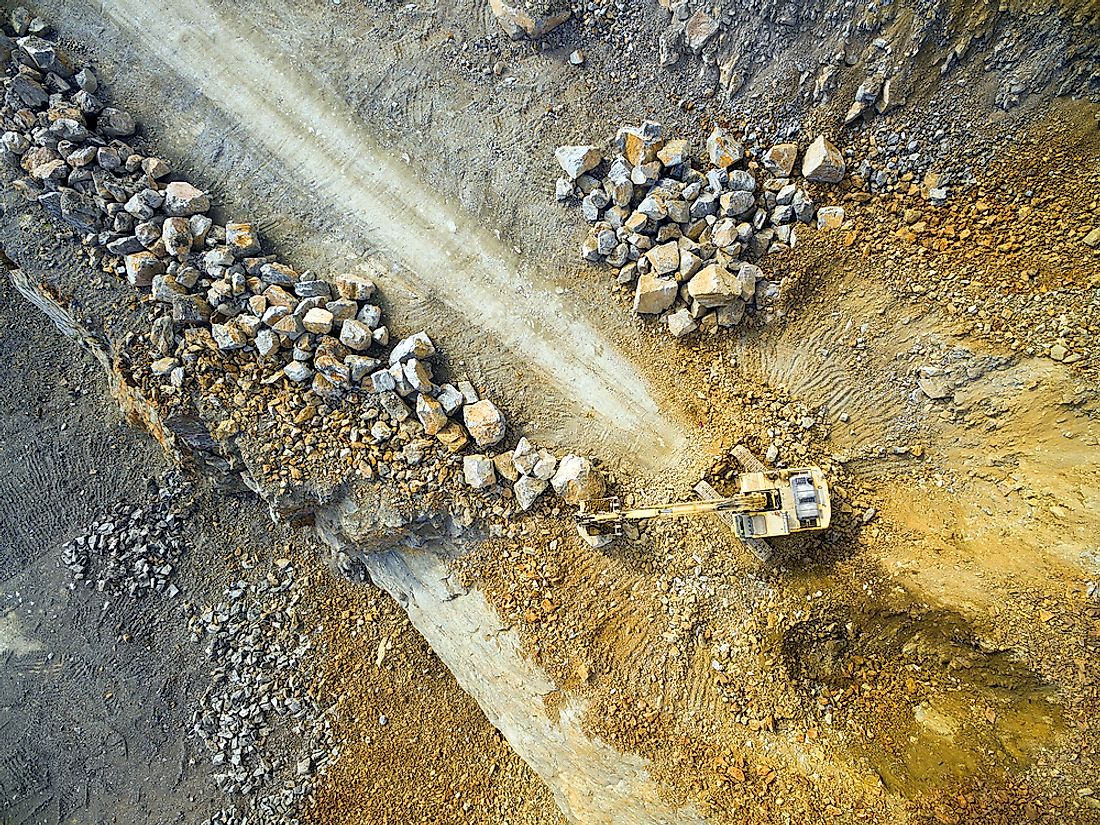Top Uranium Producing Countries In The World

Uranium is a silvery-white chemical element when refined. It is denoted with the symbol "U" and has an atomic number of 92. The element has unstable isotopes making it weakly radioactive. Uranium is a poor conductor of electricity but it is malleable, ductile, and strongly electropositive. Uranium metal has a high density of 19.1 g/cm3 and reacts with most nonmetallic elements. Uranium can also dissolve in hydrochloric and nitric acid and can also react with cold water when finely divided. When exposed to air, a layer of uranium oxide will coat the metal. Uranium is extracted as an ore by open pit, underground, or borehole mining methods. The ore is crushed into fine powders and then leached to form yellowcake.
Top Uranium Producing Countries In The World
Kazakhstan
Kazakhstan is the world’s leading uranium producer. It is home to 12% of the world’s uranium resources. Uranium exploration in the country began in 1943 and since then Kazakhstan has been a source of Uranium for the world’s nuclear programs. Kazakhstan has 17 uranium mines and 50 deposits spread across six provinces that are capable of producing thousands of tons per year. However, the annual production has been capped at 20,000 tons. In 2014, the country produced 23,127 tons with the country projecting to increase its production to over 30,000 tons. The responsibility for the exploration of uranium in the country falls upon the Ministry of Geology.
Canada
Canada was the leading uranium producer until 2009 when it was overtaken by Kazakhstan. It accounted for approximately 22% of the world’s uranium output. Canada recorded discovery of Uranium in the 1930s by the Eldorado Gold Mining Company. However, the exploration began in 1942 in response to military demands. Currently, Canada accounts for 15% of the world’s production recording a production of 9,134 tons in 2014. The main uranium-producing areas in Canada are in northern Saskatchewan. McArthur River, McLean Lake, and Rabbit Lake have the largest uranium deposits in the country. Explorations involving more than 40 companies continue in several parts of Canada to increase uranium production in the country.
Australia
Uranium has been mined in Australia since 1954. Uranium, alongside other minerals, accounts for 20% of the country’s GDP. Three uranium mines are currently operating with plans in the works to open up more mines. However, Australia uranium resources account for one-third of the world’s total uranium resources. In 2014, Australia produced 5,000 tons of Uranium, the third world’s largest production after Kazakhstan and Canada. All of the country’s uranium is for export with the country relying on coal for nuclear power. Uranium is a major source of employment in the country with 1200 people employed in mining and 500 people in exploration.
Application And Hazards Of Uranium
Uranium is used in the military sector to manufacture ammunitions. The ammunitions made of uranium are able to destroy heavily armored targets because of its high impact and density. Depleted uranium is also used to make military shielding materials that are used to store radioactive material. Uranium is also used to produce nuclear power. Nuclear plants use fuel enriched with uranium for their commercial reactors. Despite the several benefits of uranium, it affects the functioning of vital organs in the body like kidney, heart, and liver since it is a toxic metal. Exposure to uranium and its decay products may lead to fatalities. Grains of uranium may ignite spontaneously since uranium is pyrophoric.
Top Uranium Producing Countries In The World
| Rank | Country | Uranium Production (tonnes U), 2014 |
|---|---|---|
| 1 | Kazakhstan | 23,127 |
| 2 | Canada | 9,134 |
| 3 | Australia | 5,001 |
| 4 | Niger | 4,057 |
| 5 | Namibia | 3,255 |
| 6 | Russia | 2,990 |
| 7 | Uzbekistan | 2,400 |
| 8 | United States | 1,919 |
| 9 | China | 1,500 |
| 10 | Ukraine | 926 |







